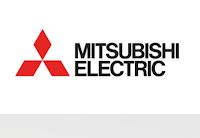VMware introduced its 5G Telco Cloud Platform, featuring Tanzu Kubernetes Grid - an embedded Kubernetes distribution - that will allow Communication Service Providers (CSPs) to reliably build, manage and run containerized workloads across private, telco, edge and public clouds.
VMware said its new solution provides a cloud-first network architecture to accelerate 5G and edge innovation while delivering service agility, operational consistency and integrated lifecycle management automation from infrastructure up to network services. The idea is to evolve the existing VMware vCloud NFV solution to Telco Cloud Infrastructure, supporting both Virtual Network Functions (VNFs) and Cloud Native Network Functions (CNFs) across telco networks.
The VMware Telco Cloud Platform combines VMware Telco Cloud Infrastructure – an evolution of the vCloud NFV solution – and VMware Telco Cloud Automation – the recently launched multi-domain orchestration and automation capability.
VMware’s Telco Cloud Automation intelligently automates the end-to-end lifecycle management of network functions and services to simplify operations and accelerate service delivery while optimizing resource utilization. Telco Cloud Automation also now supports infrastructure and Containers-as-a-Service (CaaS) management automation to streamline workload placement and deliver optimal infrastructure resource allocation. It also significantly simplifies the 5G and telco edge network expansions through zero-touch-provisioning (ZTP) whenever capacity is required.
“VMware continues to accelerate the delivery of a comprehensive telco and edge cloud portfolio that addresses our customers’ challenges of today and enables them to harness the opportunities of tomorrow,” said Shekar Ayyar, executive vice president and general manager, Telco and Edge Cloud Business Unit, VMware. “With support for cloud native technologies in the Telco Cloud Platform, CSPs can now boost their innovation speed to deliver new applications and services, reduce operational complexities, and realize substantial total cost of ownership savings, further accelerating the rollout of their 5G networks.”
VMware is also announcing Telco Cloud Operations, a real-time automated assurance solution designed to bridge the gap between virtual and physical networks. The solution provides holistic monitoring and performance management across multiple layers of the network, including SD-WAN, for rapid insights, lower costs and improved customer experience. It integrates machine-learning based performance analytics and vivid reporting dashboards for proactive assurance. Complemented by the Uhana solution from VMware that provides intelligent automation for Radio Access Networks (RANs), CSPs can have comprehensive operations visibility across their entire network.
DISH selected VMware's Telco Cloud solution for its 5G, cloud-native Open Radio Access Network (O-RAN).
VMware said its Telco Cloud will enable DISH to utilize software from leading vendors to optimize and accelerate its 5G network deployment. Additionally, it will provide DISH with enhanced automation, resiliency, security and flexibility. The VMware Telco Cloud provides an abstraction layer across multiple network domains and enables DISH to leverage hyper-scale public cloud capacity where needed, while maintaining core control points. The software-defined nature of the VMware Telco Cloud is part of the platform to support the DISH ecosystem of partners to accelerate 5G leadership in the U.S.

“VMware software will serve as a powerful foundation for our cloud-native, software-defined 5G network,” said Marc Rouanne, executive vice president and chief network officer, DISH. “By bringing together innovations such as the distributed cloud, edge computing and network slicing, this software will help us provide our customers with customizable, secure solutions that will be more cost-effective than legacy, vertically-integrated, hardware-reliant alternatives.”
“We’re excited to work with DISH to architect and build a state-of-the-art, nationwide cloud-first 5G mobile network platform,” said Shekar Ayyar, executive vice president and general manager, Telco and Edge Cloud Business Unit, VMware. “This software-led approach will enable DISH to innovate and deliver new services to all types of customers – enterprise, small business, and consumer – across the U.S.”
Wednesday, June 24, 2020 Vmware
VMware is expanding its Telco Cloud certification program to enable telco network functions partners to test the interoperability and readiness of their Virtual Network Functions (VNF) and Cloud-Native Network Functions (CNF) with the VMware Telco Cloud platform.
To date, more than 35 partners have received more than 170 certifications. The expanded program will offer two new certifications:
- VMware Ready for Telco Cloud certifies network functions for deployment and lifecycle operations through VMware Telco Cloud Automation, a multi-cloud orchestration and automation platform. As part of this certification program, VMware collaborates with partners to create an ETSI-Compliant descriptor, as well as workflow, resource, and artifacts for a validated and tested Cloud Service Archive (CSAR). This level requires the partner to complete the VMware Ready for Telco Cloud Infrastructure certification as a pre-requisite.
- VMware Ready for Telco Cloud Infrastructure, formerly known as VMware Ready for NFV, identifies telco network functions that interoperate with the core infrastructure layers of the VMware Telco Cloud, as referenced by the VMware ETSI-compliant vCloud NFV Reference Architecture. The focus of this certification level is on the virtualized infrastructure manager (VIM) based on VMware Cloud Director and VMware Integrated OpenStack and, shortly, CaaS (Container as a Service): VMware Tanzu Kubernetes Grid compatibility, as well as the compatibility with the platform’s core components: VMware vSphere for virtualized compute, VMware NSX for virtualized networking and VMware vSAN for virtualized storage. The program is available at no cost to VMware partners. Testing can be completed either in the VMware on-premise certification lab or in the cloud as a self-service model.

VMware said its expanded program enables partners to accelerate the onboarding and deployment of their 5G-ready services on the VMware Telco Cloud platform, thereby reducing communications service providers (CSPs) time to revenue. CSPs benefit from having access to advanced network functions and services, such as 5G Core components, that are ready to be deployed on the VMware Telco Cloud platform.
























